Some people believe that there is no such thing as “off-the-beaten-path Tuscany“, and yet, most people don’t know anything about the Abbazia Ardenghesca, also known as San Lorenzo Abbey and “Al Lanzo” Abbey from the name of the nearby river. However, what nowadays looks like a small country parish 2km outside the village of Civitella Marittima was once a powerful and prosperous abbey.
I have fond memories of the farm nearby, known by the locals as “l‘Abbadia“, and I remember the mix of fascination and fear that I felt around that dark church and its yard and in the wide rooms of the villa. The buildings that once belonged to the monastery had long become part of a larger structure which used to be a beautiful countryside home and the heart of a prosperous farm, and that is now privately owned and shamefully going to rack and ruin, since the owners only use the land as a game reserve and for horse-breeding. It’s disgraceful to see that amazing estate be completely neglected.

My great-grandmother worked there all her life, and I remember it when the “Abbadia” was at its best. I loved the stories that she would tell about the ghosts of the abbots and the skeletons they had found all around the abbey and how they must have been honest friars murdered by some debauched clergymen. I also remember stories about a mysterious crypt inhabited by large turtles that sometimes surfaced and were found by the church entrance: sinful monks come back under a different shape to pray in the abbey and ask for forgiveness. Obviously, only fascinating stories of bygone times, meant to entertain the family gathered around the fireplace in the long winter nights, but enough to charm and scare a child and to leave bittersweet memories in an adult heart.
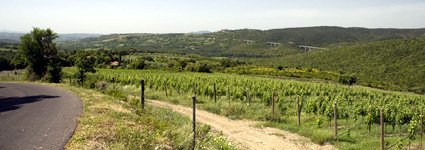
The walk from the village of Civitella Marittima down to the river Lanzo and to the Abbey is lovely. The road is very steep but there are some neat things along the way, such as the old public fountains, once used by the women to do their laundry. I can’t imagine walking back and forth from the village with heavy soaking wet linens! When I was a kid, I remember going there often with my friends: it was as far as we would go from the village. We just sat there chatting or we tried to catch frogs with corks tied to a cotton thread, a pastime which would probably make today’s kids laugh out loud and yet it wasn’t more than 25 years ago. They would see something floating on the water and would try and bite it: you had to be really fast to pull them out of the water because of course, as soon as they figured that it wasn’t anything edible, they would let go! We would put them back in the water immediately of course, and start all over again: apparently frogs don’t smarten up quickly!
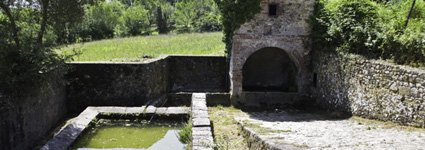
The abbey is at the bottom of the valley. There is a brand new bridge now, after years of crossing the river on a low cement platform, flooded during most of the winter months. Probably founded in the 11th century (some Papal bulls prove that it already existed in 1063), the abbey was located within the estates of the Ardengheschi family, in a strategic position along the important road known as “Via del Sale” (literally, “the way of the salt”) that connected Siena to the coast of the Maremma. It was probably founded by the powerful Sienese family: it is certain that the Ardengheschi Counts donated land and properties to the monastery, which, by the end of the 12th century, had become so powerful and wealthy as to receive support from the Empire and to be controlled directly by the Holy See.
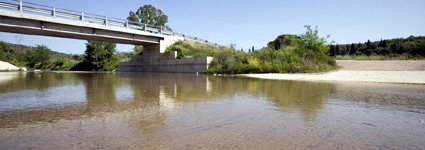
With the decline of the Ardengheschi’s power and the crisis of the Benedictines in Tuscany, due to the rise of the new system of municipalities or comuni, the Abbey started to lose its power, and in 1202 it accepted to make an act of obedience to the Republic of Siena. Over the centuries, its properties were either sold or usurped by the new powerful noblemen of the area who didn’t fear the abbots anymore.
The stories about the Abbey handed on from father to son over the centuries tell of corrupted and debauched abbots who led the Abbey to ruin to a point that in 1440 it lost its independence and was put under the control of the Sienese Augustinian priorship of Santa Maria degli Angeli. This didn’t stop the decline of the Abbey, which, in the 18th century, completely abandoned by the Church, was given to the Parish of Santa Maria in Montibus of the near village of Civitella Marittima, and transformed in nothing more but a countryside parish.
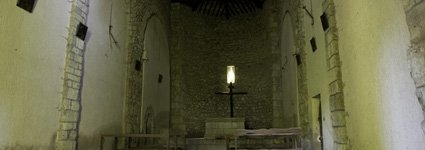
The Ardengheschi Abbey represents one of the highest examples of Romanesque architecture in Southern Tuscany. The severe façade is original of the 12th century and its decorations remind of the façade of Sant’Antimo Abbey. The two abbeys were in fact very close, and the monks living there often travelled between the two. The main common architectonic feature of the façades of the two abbeys are the columns flanking the portals, with decorated capitals with carvings showing animals and monstrous creatures. Originally made up of three naves and three apses, an unusual feature for the area, it was later reduced to a single aisle church, but the round arches that separated the three naves are still visible on the sides of the building.
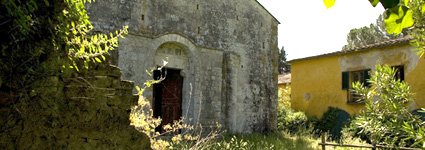
A walk to the Abbey is well worth the time and effort. As a local, my hope is that a greater popularity will regain this amazing place the respect that it deserves.
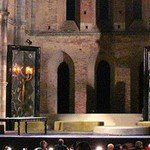



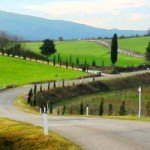



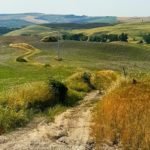
I have just discovered this blog and it looks to be very interesting.
I just want to comment that by coincidence, on my last trip to Italy we stayed at an agriturismo near Volterra called Podere San Lorenzo, which was originally an old Franciscan chapel along an ancient Roman road that people used later on their pilgrimages to see the Pope.
Thanks for the information about Abbazia Ardenghesca.
Lee
Hi Lee, thank you for you comment! I know Podere San Lorenzo very well: it’s an amazing place!
San Lorenzo was a very loved saint in the past, and many villages, towns and churches are dedicated to him. He’s Grosseto Patron Saint I believe, and maybe Perugia Patron Saint too. I think most people know his name because on the day when he’s celebrated, August 10, people gather in the countryside to watch the shooting stars.
I hope you’ll keep following my blog and that you’ll leave other comments! Have a great day!
Not to be overlooked is the abazzia di Sant’ Antimo just south of Montalcino. It dates back to Charlemagne and is a working Abby serving the community of Castelnuovo del Abbate. Breathtaking from the outside and inside it sits in the open valley below the town. In addition, they teach and perform Gregorian Chant there.
True! Sant’Antimo is amazing. Do you know that they organize walking and singing courses? You can spend a week there and learn Gregorian chanting while you walk in the surrounding countryside!
Read about the guest post on the Velvet Escape Blog about my great-grandmother and how she inspired me to travel and welcome people to Tuscany!
A World on Inspiration: The Rebel:
Thank you Keith! Follow Keith on Twitter!
Looks like an interesting place. I’d love to play the frog catching game… I was looking up where it’s located and what else I might see in the area and came up with this other place owned by the same family, the Belagio castle. Have you been there?
http://tinyurl.com/n9kvzg
Loved this article; just couldn’t stop reading. Tuscany is wonderful and those little off the beaten path places that can be “claimed” as your own discoveries make a trip. I’ve often found that even inside the most touristed cities, like Florence for example, little discoveries can be made if one looks for them beyond the pages of the travel guide book.